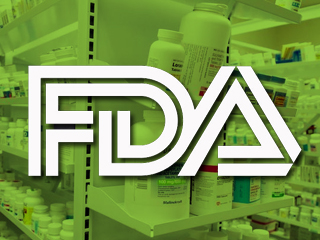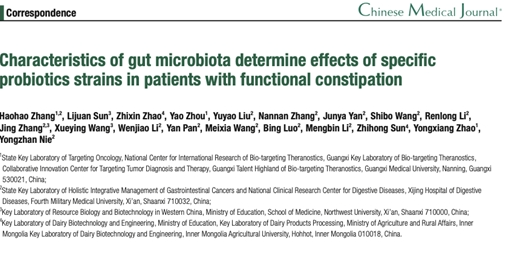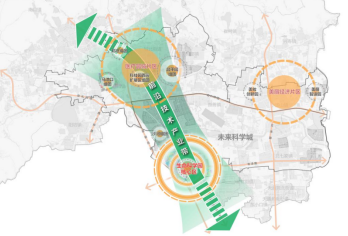
一篇纳入了49项研究和16种药物且横跨20年的系统综述指出:在已批准的药物新发现的危险性方面,药物食品药物管理局(FDA)和临床医生以及患者的沟通经常是无效的。该机构的警告行为经常未能对医生处方和临床监测产生影响。
研究调查时间是从1990至2010期间,药物特征是——FDA增加了使用警告并向公众提出使用建议,或写信告知临床医生或有处方权的人药物的非预期风险的药物。一篇发表在一月Medical Care在线期刊上的综述指出,FDA的这些行为经常不能达到其预期目的或出现预期之外的结果。
比如,FDA推荐监测服用非典型抗精神病药物的患者是否存在糖尿病,但是血糖测试率并没有增加。该机构建议医生要注意药物与药物之间的相互作用——如治疗胃食管返流的西沙比利和治疗高血压的坎地沙坦,虽然FDA反复对这两种药物的同时使用发出警告,但是该两种药物的联合利用率直到18个月后才出现显著降低。
该研究的共同作者G. Caleb Alexander, MD指出:“我认为FDA极其努力去确定、评估以及与医生交流处方药的风险——这是该机构认为最重要的事”。“我们的发现之一就是FDA手边的任务是多么的复杂!”
因为该系统综述纳入的研究选用的方法学的不同,所以研究者无法提供FDA在药物处方上采取的行动的平均效果。
什么时候警告会起反作用?
该综述发现有时候FDA对某些患者提出的药物处方警告会导致另一些患者减少对该药物的使用。在2005年4月,FDA对非典型抗精神病药物在痴呆患者中的使用提出了“黑盒子警告”。尽管医生控制了在该类患者中药物的应用,他们同时也停止了该类药物在FDA批准的适应症和没有痴呆的患者中的应用。
综述指出目的明确的建议可能会产生未预料的结局。在2003和2004年提出的对在儿童和青少年中使用抗抑郁药物的警告导致了在年轻抑郁患者中药物使用的大幅减少。后来研究发现在减少了抗抑郁药物的使用后出现年轻人自杀的高峰。
芝加哥大学Pritzker医学院医学副教授Dr. Alexander:“我们很难知道什么时候要听从警告。”“一切都是在不确定的环境下进行的。FDA应该要同时考虑事实和判断。”
FDA说它正在升级其药物风险沟通系统。
FDA发言人Erica V. Jefferson 指出:“我们会继续改善我们我公众提供及时、准确、循证的安全的信息。”“我们认识到要改变已经建立的临床医学实践是很困难的。此外,因为在很多情况下我们指出的风险并不是发生在所有使用该药物的患者中,所有不可能整体改变实践模式,不同的处方医生和不同的患者会考虑不同的风险因素,他们会将自己的考虑纳入效益-风险分析。”
综述发现当FDA传递的是清晰的风险信息以及不断重复这些信息时,能取得最佳效果。Dr. Alexander建议政府应该主动监测医生对警告药物的处方情况。
他同时指出:“FDA应该同制药公司加强交流,因为后者会根据风险因素进行药物调整”“他们应该根据市场分割原则来确定处方多的人员,然后将有关药物风险的信息传递给这些特定的医生。”

Impact of FDA Drug Risk Communications on Health Care Utilization and Health Behaviors: A Systematic Review.
Dusetzina SB, Higashi AS, Dorsey ER, Conti R, Huskamp HA, Zhu S, Garfield CF, Alexander GC.
OBJECTIVE: To review literature on the impact of The Food and Drug Administration (FDA) drug risk communications on medication utilization, health care services use, and health outcomes.
DATA SOURCES: The authors searched MEDLINE and the Web of Science for manuscripts published between January 1990 and November 2010 that included terms related to drug utilization, the FDA, and advisories or warnings. We manually searched bibliographies and works citing selected articles and consulted with experts to guide study selection.
STUDY SELECTION: Studies were included if they involved an empirical analysis evaluating the impact of an FDA risk communication.
DATA EXTRACTION: We extracted the drug(s) analyzed, relevant FDA communication(s), data source, analytical method, and main outcome(s) assessed.
RESULTS: Of the 1432 records screened, 49 studies were included. These studies covered 16 medicines or therapeutic classes; one third examined communications regarding antidepressants. Most used medical or pharmacy claims and a few rigorously examined patient-provider communication, decision making, or risk perceptions. Advisories recommending increased clinical or laboratory monitoring generally led to decreased drug use, but only modest, short-term increases in monitoring. Communications targeting specific subpopulations often spilled over to other groups. Repeated or sequential advisories tended to have larger but delayed effects and decreased incident more than prevalent use. Drug-specific warnings were associated with particularly large decreases in utilization, although the magnitude of substitution within therapeutic classes varied across clinical contexts.
CONCLUSIONS: Although some FDA drug risk communications had immediate and strong impacts, many had either delayed or had no impact on health care utilization or health behaviors. These data demonstrate the complexity of using risk communication to improve the quality and safety of prescription drug use, and suggest the importance of continued assessments of the effect of future advisories and label changes. Identifying factors that are associated with rapid and sustained responses to risk communications will be important for informing future risk communication efforts.
文献链接:https://www.biodiscover.com/news/unclass/article/100199







